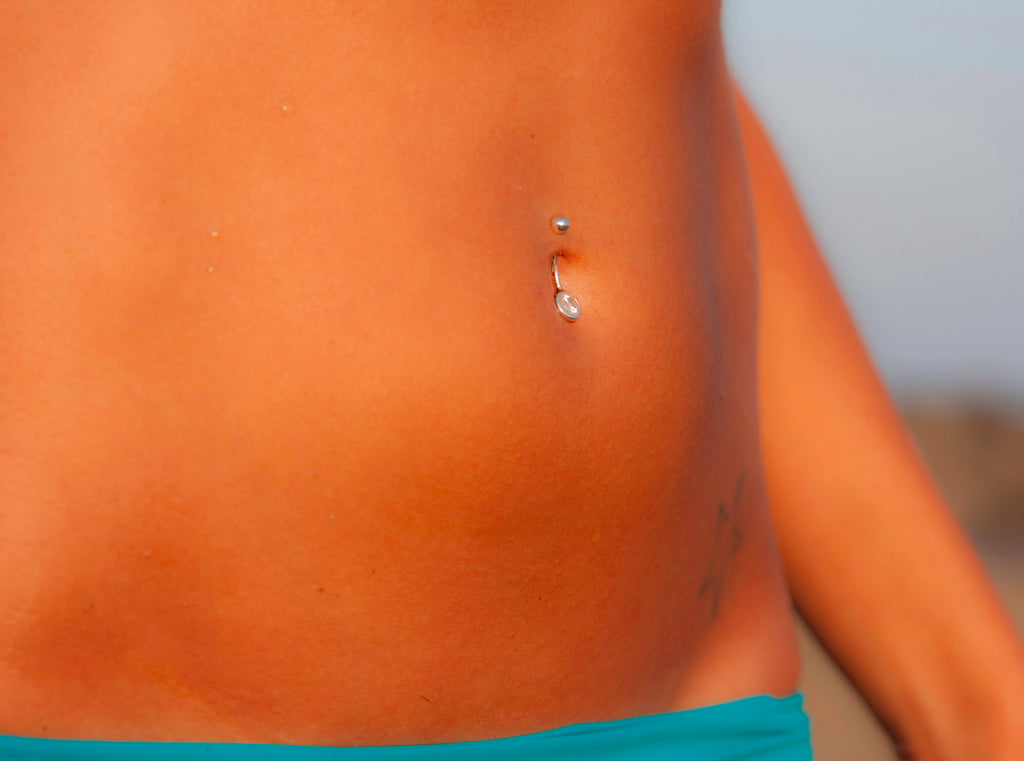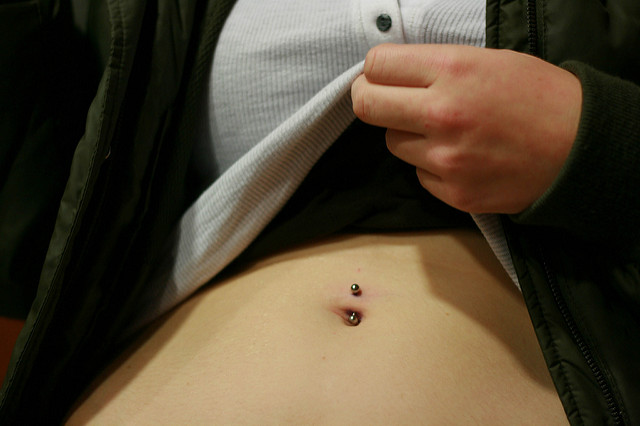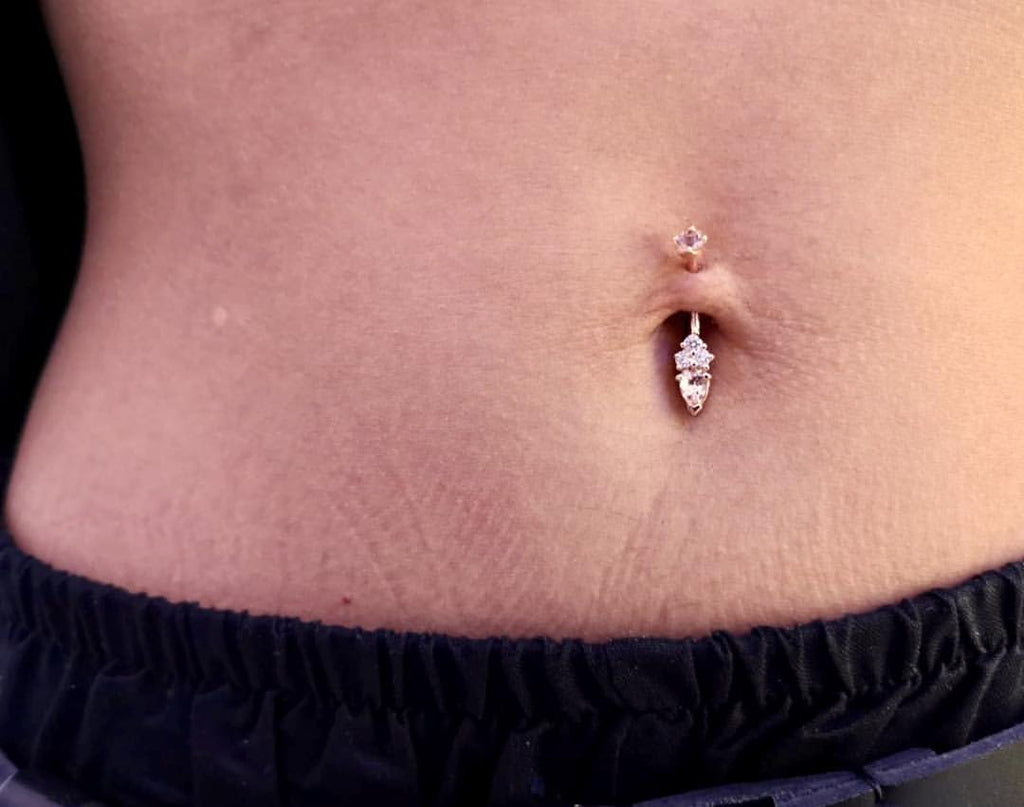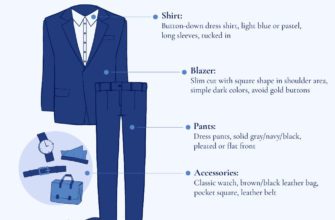So, you’ve just gotten a fabulous new addition to your body, a stunning navel piercing. Congratulations! But now what? Taking care of your fresh piercing is crucial to ensure proper healing and avoid any complications down the line. In this article, we will provide you with essential insights and effective tips for maintaining the health and aesthetics of your belly button piercing.
Protecting your investment
Revolutionize Your Health & Lifestyle!
Dive into the world of Ketogenic Diet. Learn how to lose weight effectively while enjoying your meals. It's not just a diet; it's a lifestyle change.
Learn MoreYour navel piercing is not just a piece of jewelry, but a representation of your personality and style. Just like any valuable possession, it requires proper care and attention. From cleaning rituals to avoiding potential irritants, there are several steps you can take to protect your investment and preserve the stunning appearance of your piercing.
Cleaning: the cornerstone of piercing aftercare
One of the most critical aspects of navel piercing care is cleaning. Regular, proper cleaning aids in warding off infections and aids in the healing process. Cleaning your piercing can be done with saline solution or a gentle, unscented soap. It is important to remember not to overclean or use harsh substances, as this may disrupt the delicate healing process.
- Proper Belly Button Piercing Care: Essential Tips
- Cleaning your Belly Button Piercing
- Why proper cleaning is crucial
- Recommended cleaning solutions
- Step-by-step cleaning instructions
- Avoiding Irritation and Infection
- Common causes of irritation
- Preventative measures
- Recognizing and Treating an Infection
- Choosing the Right Jewelry
- Materials to avoid
- Questions and answers
Proper Belly Button Piercing Care: Essential Tips
Ensuring the health and well-being of your new belly button piercing is a top priority. To properly care for this delicate area, it is important to follow these essential guidelines, allowing for proper healing and minimizing the risk of complications.
First and foremost, maintaining cleanliness is paramount. Cleaning your belly button piercing regularly with a saline solution or gentle antimicrobial soap will help prevent infections and promote healing. It is essential to gently wash around the piercing site, ensuring all residue and debris are removed without causing any irritation or damage to the healing tissue.
In addition to cleaning, it is crucial to avoid any unnecessary trauma or stress to the piercing. This includes refraining from changing or twisting the jewelry too soon, as well as avoiding any activities that could cause excessive pulling or tugging on the piercing. By keeping the area protected and avoiding undue pressure, you can prevent irritation and allow the piercing to heal properly.
Proper aftercare also involves avoiding certain substances that could hinder the healing process. This includes harsh chemicals, such as chlorine or alcohol, which can cause dryness and irritation. It is also important to avoid applying any creams, lotions, or ointments directly to the piercing site, as they can clog the pores and hinder the natural healing process.
Additionally, maintaining a balanced lifestyle can contribute to the proper healing of your belly button piercing. Consuming a healthy diet rich in vitamins and minerals can help boost your immune system, supporting the body’s natural healing process. Staying hydrated and getting enough rest are also crucial in ensuring the body has the resources it needs to heal the piercing effectively.
Overall, proper care for your belly button piercing involves a combination of cleanliness, gentle treatment, and maintaining a healthy lifestyle. By following these essential tips and being mindful of the healing process, you can enjoy your new piercing with confidence and minimal risk of complications.
Cleaning your Belly Button Piercing
Maintaining proper hygiene is crucial when it comes to caring for your belly button piercing. The process of cleaning your piercing involves gentle daily care to prevent infection and promote healing. This section will provide you with the essential information on how to keep your belly button piercing clean and healthy.
To begin, it’s important to clean your piercing regularly, preferably twice a day, using a saline solution or a gentle, non-alcoholic cleanser recommended by your piercer. Saline solution is a natural antiseptic that helps keep the area clean and free from bacteria, reducing the risk of infection. Remember to clean both the entry and exit points of the piercing to ensure thorough cleansing.
When cleaning your belly button piercing, always wash your hands with warm water and antibacterial soap before touching the area. Gently soak a cotton ball or sterile gauze pad in the saline solution or cleanser and place it over the piercing. Let it soak for a few minutes to allow the solution to work its magic and break down any debris or dried blood. Gently wipe around the piercing, ensuring you don’t rotate or move the jewelry while cleaning.
After cleaning, rinse the area with clean, warm water to remove any residue from the cleanser or saline solution. Pat the piercing dry with a disposable paper towel or let it air dry. Avoid using towels or cloth materials that may harbor bacteria. It’s also essential to avoid harsh soaps, lotions, or ointments on the piercing, as they can irritate the healing tissue and hinder the healing process.
Keep in mind that everyone’s healing process is unique, and some people may need to continue cleaning their belly button piercing for an extended period. Therefore, it’s crucial to follow the aftercare instructions provided by your piercer and consult them if you have any concerns or questions about cleaning your piercing.
By adopting a regular cleaning routine and following proper aftercare, you can ensure a healthy and trouble-free healing process for your belly button piercing. Remember to be patient and gentle with your piercing, allowing it to heal naturally and effortlessly. This will help you enjoy your beautiful and well-maintained belly button piercing for years to come.
Why proper cleaning is crucial
Ensuring that you clean your belly button piercing correctly is incredibly important for its overall health and healing process. Adequate cleaning helps prevent infection, promotes proper healing, and maintains the appearance of the piercing.
Regular cleaning of your belly button piercing is crucial because it helps remove any dirt, bacteria, or debris that may accumulate around the piercing area. These foreign particles can increase the risk of infection and delay the healing process.
Proper cleaning also helps to reduce the likelihood of developing complications such as migration, rejection, or scarring. By thoroughly cleaning the area, you minimize the chances of encountering these issues and ensure that your piercing stays intact and attractive.
An essential part of proper cleaning is using the right products. It is recommended to clean your belly button piercing twice a day with a saline solution or a mild, fragrance-free antimicrobial soap. These products help kill bacteria and keep the piercing clean without causing irritation.
Additionally, it is important to handle your belly button piercing with clean hands to avoid introducing any additional bacteria during the cleaning process. Always wash your hands thoroughly before touching or cleaning the piercing.
| Benefits of Proper Cleaning: |
| – Prevents infection |
| – Promotes proper healing |
| – Maintains the appearance of the piercing |
| – Reduces the risk of complications |
| – Prevents migration, rejection, and scarring |
By understanding the importance of proper cleaning, you can ensure a successful and hassle-free healing process for your belly button piercing. Make it a priority to follow cleaning guidelines and consult with your piercer or a healthcare professional if you have any concerns or issues related to your piercing.
Recommended cleaning solutions

Ensuring proper hygiene is crucial in maintaining the health of your belly button piercing. Cleaning solutions specifically formulated for piercing care help prevent infections and promote healing. Here are some recommended solutions to keep your piercing clean and safe:
- Saline solution: A sterile mixture of water and salt, saline solution is a gentle and effective way to clean your piercing. It helps remove crust and debris, soothes inflammation, and promotes healing.
- Antimicrobial soap: Look for a mild, non-fragrant antimicrobial soap specifically designed for piercings. These soaps help kill bacteria, viruses, and fungi without causing irritation or drying out the skin.
- Sea salt soak: Creating a warm sea salt soak can provide a soothing and cleansing experience for your belly button piercing. Dissolve a quarter teaspoon of sea salt in a cup of warm water and gently soak your piercing for a few minutes.
It’s important to note that using natural remedies or homemade solutions, such as hydrogen peroxide or alcohol, can be harmful to your piercing as they can dry out the skin or damage the healing tissues. Stick to the recommended cleaning solutions mentioned above to ensure the best care for your belly button piercing.
Step-by-step cleaning instructions

Proper cleaning is crucial for maintaining a healthy belly button piercing. This section will guide you through step-by-step instructions on how to clean your piercing effectively without causing any harm or discomfort.
Step 1: Gathering the essentials
Before starting the cleaning process, make sure you have all the necessary supplies. These can include a mild saline solution, sterile cotton buds, and clean paper towels or gauze pads. Having these items ready will ensure a smooth and hassle-free cleaning experience.
Step 2: Washing your hands
Before cleaning your belly button piercing, it is essential to wash your hands thoroughly to prevent any transfer of bacteria. Use warm water and soap, making sure to clean between your fingers and under your nails. Rinse well and dry your hands with a clean towel.
Step 3: Preparing the saline solution
Take a clean cup or container and fill it with warm distilled water. Add a teaspoon of non-iodized sea salt to the water and stir until dissolved. This homemade saline solution will help cleanse the piercing without causing irritation.
Step 4: Soaking the cotton bud
Dip a sterile cotton bud or swab into the saline solution, ensuring it is fully saturated. Gently squeeze out any excess liquid, leaving the bud damp but not dripping. The cotton bud will be used to clean the area around the piercing.
Step 5: Cleaning the piercing
Hold the damp cotton bud against the piercing and gently rotate it in a circular motion. Make sure to cover the entire area around the jewelry, including the entrance and exit holes. Take your time and be gentle to avoid causing any pain or damage.
Step 6: Drying the area
Once you have thoroughly cleaned the piercing, use a clean paper towel or gauze pad to gently pat the area dry. Avoid using towels or tissues that may leave behind fibers or lint, as these can irritate the piercing.
Step 7: Final thoughts
Remember to repeat this cleaning process twice a day, preferably in the morning and before bed, to keep your belly button piercing clean and free from infections. Be patient and consistent with your cleaning routine, and always follow any additional care instructions provided by your piercer.
Avoiding Irritation and Infection
To ensure the well-being of your navel piercing, it is crucial to take necessary precautions and practices that will help you avoid any form of irritation or infection. By implementing these essential guidelines, you can promote the healing process and maintain a healthy belly button piercing.
- Keep your hands clean: Regularly wash your hands with antibacterial soap before touching your piercing area. This will prevent the transfer of dirt and bacteria, reducing the risk of infection.
- Practice proper cleaning routine: Gently clean your belly button piercing twice a day using a saline solution or a specialized piercing aftercare product. Avoid using harsh soaps or alcohol-based solutions, as they can cause irritation.
- Avoid touching or twisting the jewelry: Refrain from touching or twisting the jewelry to prevent unnecessary movement or friction. Excessive manipulation can lead to irritation and delay the healing process.
- Avoid exposure to irritants: Stay away from pools, hot tubs, and bodies of water, as they may contain bacteria and chemicals that can cause irritation or infection. Additionally, avoid using harsh chemicals, perfumes, or lotions near the piercing area.
- Choose appropriate clothing: Opt for loose-fitting clothes made of breathable fabric to allow proper airflow around the piercing. Tight clothing can create friction and trap moisture, increasing the risk of infection.
- Avoid sleeping on your stomach: Sleeping on your stomach can put pressure on the piercing and hinder the healing process. Try to sleep on your back or side to minimize discomfort and reduce the risk of irritation.
- Be cautious during physical activities: If you engage in activities that involve excessive body movements or contact, take extra precautions to protect your belly button piercing. Consider covering it with a waterproof bandage or using a protective cover.
- Monitor for signs of infection: Keep an eye out for any abnormal symptoms, such as excessive redness, swelling, pus-like discharge, or persistent pain. If you notice any of these signs, seek immediate medical attention.
- Follow professional advice: Always listen to the advice given by your piercer or healthcare professional. They can provide tailored suggestions and guidance based on your specific piercing needs.
By following these key tips and being mindful of potential irritants, you can significantly reduce the chances of encountering any problems with your belly button piercing. Remember, proper care and attention are essential for a successful healing process and long-term satisfaction with your piercing.
Common causes of irritation

Experiencing irritation around your belly button piercing can be uncomfortable and may lead to complications if not addressed properly. It is important to be aware of the common causes of irritation so that you can take necessary steps to prevent and reduce any discomfort you may experience.
One of the primary causes of irritation is improper cleaning and hygiene practices. Failing to clean your belly button piercing regularly and thoroughly can result in the accumulation of dirt, bacteria, and other impurities, leading to irritation and potential infections. It is crucial to follow a proper cleaning routine using a mild saline solution or a recommended piercing cleanser.
In addition, wearing tight clothing or rough fabrics that constantly rub against your piercing can also cause irritation. The friction caused by these materials can lead to inflammation and discomfort. To avoid this, opt for loose-fitting clothing made from soft fabrics, especially during the initial healing period of your piercing.
Using harsh cleaning products or applying excessive pressure during the cleaning process can also irritate your belly button piercing. It is important to use gentle and non-irritating cleansers to cleanse the area around the piercing. Avoid using alcohol, hydrogen peroxide, or harsh soaps, as they can disrupt the natural healing process and cause further irritation.
If you engage in activities that involve excessive movement or contact, such as sports or rigorous exercises, it is important to protect your belly button piercing to prevent irritation. Consider covering it with a clean and breathable bandage during these activities to minimize friction and reduce the chances of irritation.
Lastly, touching or playing with your belly button piercing with dirty hands can introduce bacteria and irritants, leading to irritation and potential infections. Always ensure that your hands are clean before touching your piercing and avoid unnecessary contact or excessive twisting of the jewelry.
By being mindful of these common causes of irritation and taking appropriate precautions, you can promote a healthy healing process and enjoy your belly button piercing without discomfort or complications.
Preventative measures
Ensuring the well-being of your belly button piercing requires taking certain precautions. By following these preventative measures, you can maintain the health and longevity of your piercing, reducing the risk of complications and promoting proper healing.
1. Cleanliness and hygiene are key when it comes to caring for your belly button piercing. Regularly clean the area around the piercing with a saline solution or mild soap to prevent the buildup of bacteria and dirt. Avoid using harsh chemicals or excessive scrubbing, as this can irritate the piercing.
2. Avoid touching or playing with your belly button piercing unnecessarily. Keep your hands away from the piercing to minimize the risk of introducing dirt, germs, or bacteria. Touching the piercing excessively can also lead to irritation or inflammation.
3. Choose clothing that is breathable and non-irritating. Opt for loose-fitting garments made from natural materials, such as cotton, to reduce friction and allow proper airflow to the piercing. Avoid tight or restrictive clothing that may rub against the piercing, causing irritation or discomfort.
4. Be cautious when engaging in physical activities or sports. Protect your belly button piercing by covering it with a waterproof bandage or using a protective cover if necessary. Avoid swimming in pools, hot tubs, or bodies of water that may contain bacteria or other contaminants that can infect the piercing.
5. Keep an eye out for any signs of infection or complications. If you notice excessive redness, swelling, pain, or discharge from the piercing, seek professional medical advice promptly. Quick action can help prevent further complications and ensure proper healing.
By implementing these preventative measures, you can minimize the risk of infection and promote a healthy healing process for your belly button piercing. Remember that every individual is unique, and it’s essential to consult with a professional piercer or healthcare provider for personalized advice and guidance.
Recognizing and Treating an Infection
Identifying and managing an infection that may occur with a belly button piercing is crucial for your overall health and the successful healing of your piercing. In this section, we will discuss common signs of an infection and provide you with essential tips on how to treat it effectively to prevent further complications.
Signs of Infection:
| Common Symptoms | What to Look for |
| Pain or tenderness | Noticeable discomfort or sensitivity around the piercing site |
| Redness or swelling | Visible inflammation or increased size of the piercing area |
| Heat or warmth | Abnormal heat or warmth radiating from the piercing |
| Prolonged or excessive discharge | Unusual amount of pus or yellowish fluid oozing from the piercing |
| Unpleasant smell | Noticeable foul odor coming from the piercing |
If you notice any combination of these symptoms, it is important to take action promptly to prevent the infection from spreading or worsening.
Treating an Infection:
When dealing with an infection, it is crucial to practice good hygiene and maintain a consistent cleaning routine. Here are some steps you can follow:
- Clean your hands thoroughly with antibacterial soap before touching your belly button piercing.
- Gently clean the infected area with a saline solution or a mild saline wound wash. Avoid using harsh or scented soaps
- Apply a warm compress to the infected piercing for about 5-10 minutes, several times a day, to help reduce inflammation and promote drainage.
- Avoid touching or rotating the jewelry excessively to prevent further irritation.
- Consider using an over-the-counter antiseptic cream or ointment recommended by a healthcare professional.
- If the infection persists or worsens, seek medical attention for proper diagnosis and treatment.
Remember, proper care and prompt action are essential in managing and treating an infection to ensure a successful healing process for your belly button piercing.
Choosing the Right Jewelry

When it comes to adorning your belly button piercing, the selection of jewelry plays a crucial role in both style and safety. Making the right choice ensures comfort, prevents irritation, and enhances the overall look of your piercing. Here are some important factors to consider when selecting the perfect jewelry.
Firstly, it is essential to opt for materials that are safe for your piercing and compatible with your body. Surgical grade stainless steel, titanium, and solid gold are commonly recommended options due to their hypoallergenic properties. These materials minimize the risk of allergic reactions and irritations, ensuring a comfortable and hassle-free healing process.
In addition to material safety, the size and style of the jewelry are equally significant. The size should fit your piercing snugly without being too tight or too loose. It is crucial to measure the gauge (thickness) of your piercing accurately and choose a corresponding size to prevent discomfort or potential damage. The style, on the other hand, provides an opportunity to express your unique sense of fashion. From basic captive bead rings to elaborate dangle belly bars, there is a wide array of options to suit every individual’s preference.
Moreover, it is important to consider the healing stage of your piercing while selecting jewelry. During the initial healing period, it is advisable to opt for a simple and lightweight piece to minimize complications and promote proper healing. Once your piercing has fully healed, you can experiment with more elaborate and decorative jewelry options to showcase your style.
Lastly, it is crucial to purchase jewelry from reputable sources to ensure quality and authenticity. Seek out trusted piercing studios or professional online retailers known for their commitment to providing safe and reliable products. Avoid purchasing from unknown sellers or compromising on the quality of jewelry, as it may lead to complications and subpar outcomes.
By taking these considerations into account, you can confidently choose the right jewelry for your belly button piercing, allowing you to showcase your unique style while ensuring proper care and healing.
Materials to avoid
In order to ensure the proper care and healing process of your belly button piercing, it is important to be aware of the materials that should be avoided. These materials have the potential to cause irritation, allergic reactions, and hinder the overall healing process.
1. Nickel: Nickel is a common allergen and can cause severe allergic reactions in some individuals. It is important to avoid jewelry or any other materials that contain nickel, as it can lead to redness, swelling, itching, and discomfort.
2. Surgical Steel: Although surgical steel is commonly used in body jewelry, it may not be suitable for everyone. Some individuals may have a sensitivity or allergy to this material, which can trigger an inflammatory response and delay the healing process.
3. Plated Jewelry: Plated jewelry, such as gold or silver-plated pieces, should also be avoided. The plating can chip or wear off over time, exposing the underlying metal, which may cause irritation and allergic reactions.
4. Low-quality Materials: It is best to avoid low-quality materials, as they may contain harmful additives or chemicals that can cause irritation and other complications. It is recommended to opt for high-quality, hypoallergenic materials specifically designed for body piercings.
5. Alcohol-based Cleaning Solutions: While cleaning your belly button piercing is essential, it is important to avoid using alcohol-based cleaning solutions. These solutions can be too harsh and drying for the delicate skin around the piercing, potentially leading to irritation and delayed healing.
6. Synthetic Fabrics: When choosing clothing, it is advisable to avoid wearing synthetic fabrics that can trap moisture and bacteria around the piercing area. Opt for breathable, natural fabrics like cotton to promote proper healing and reduce the risk of infection.
By being mindful of these materials and making informed choices, you can ensure the health, comfort, and successful healing of your belly button piercing.
Questions and answers
How long does it take for a belly button piercing to heal?
The healing time for a belly button piercing can vary, but on average it takes around 6 to 9 months for the piercing to fully heal. However, the initial healing process can take anywhere from 3 to 6 weeks, during which you should be extra careful to prevent any infections or complications.
What is the best way to clean a belly button piercing?
The best way to clean a belly button piercing is to use a saline solution or a mild, fragrance-free, antibacterial soap. You should clean the piercing twice a day by applying the solution with a cotton swab or a clean cloth. Be sure to gently clean around the piercing and remove any crust or debris. It’s important to avoid using alcohol, hydrogen peroxide, or harsh cleansers, as they can irritate the piercing.
Can I go swimming with a belly button piercing?
Swimming is generally not recommended during the initial healing stage of a belly button piercing. Pools, hot tubs, and natural bodies of water can contain bacteria and other contaminants that may increase the risk of infection. It’s best to wait until the piercing is fully healed before swimming. If you must swim before that, make sure to cover the piercing with a waterproof bandage or a clean, tight-fitting, non-stick dressing to protect it from any potential irritants.
What are the signs of infection in a belly button piercing?
Signs of infection in a belly button piercing include redness, swelling, increased pain, warmth around the piercing, discharge of pus or excessive clear fluid, and a foul odor. If you notice any of these symptoms or if the area around the piercing becomes increasingly tender or appears to be getting worse, it’s important to seek medical attention as soon as possible. Infections should be taken seriously and treated promptly to avoid further complications.
When can I change the jewelry in my belly button piercing?
It is generally recommended to wait until the piercing has fully healed before changing the jewelry, which can take about 6 to 9 months. Changing the jewelry too early can disrupt the healing process and increase the risk of infection. If you’re unsure whether your piercing has healed enough to change the jewelry, it’s always a good idea to consult with a professional piercer or a healthcare provider.
How do I clean my belly button piercing?
To clean your belly button piercing, you should use a saline solution or a mild, fragrance-free soap mixed with warm water. Gently clean the area around the piercing with cotton swabs or a clean cloth. Rinse thoroughly and pat dry with a clean towel. Avoid using harsh chemicals or excessive rubbing, as it may irritate the piercing.
Can I go swimming with a new belly button piercing?
It is generally recommended to avoid swimming in pools, hot tubs, or any bodies of water with a new belly button piercing. The chlorine or bacteria in the water can increase the risk of infection. It is best to wait until your piercing is fully healed before swimming. If you do choose to swim, make sure to clean the piercing thoroughly afterwards.
How long does it take for a belly button piercing to heal?
The healing time for a belly button piercing can vary from person to person. On average, it takes around 6 to 9 months for a belly button piercing to fully heal. However, some individuals may experience a faster healing process, while others may take longer. It is important to follow proper aftercare instructions and be patient during the healing period.
What should I do if my belly button piercing gets infected?
If you notice signs of infection in your belly button piercing, such as redness, swelling, pain, or discharge, it is important to seek medical attention. In the meantime, you can clean the piercing with a saline solution and avoid touching or twisting the jewelry. Do not remove the jewelry unless instructed by a professional, as it may seal the infection inside.
Can I change the jewelry in my belly button piercing before it is fully healed?
It is generally recommended to wait until your belly button piercing is fully healed before changing the jewelry. This can take several months, as the piercing needs time to properly establish. Changing the jewelry too early may irritate the piercing and increase the risk of infection. If you are unsure, it is best to consult with your piercer for guidance.








